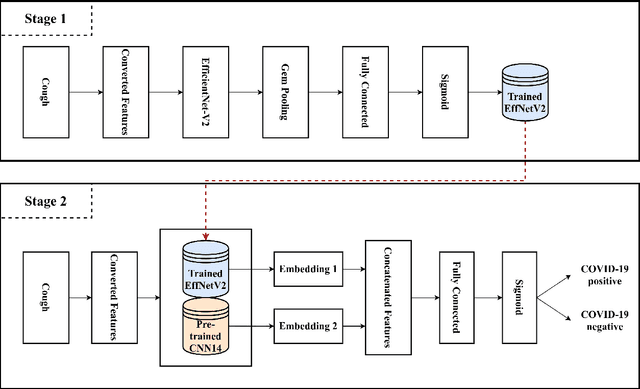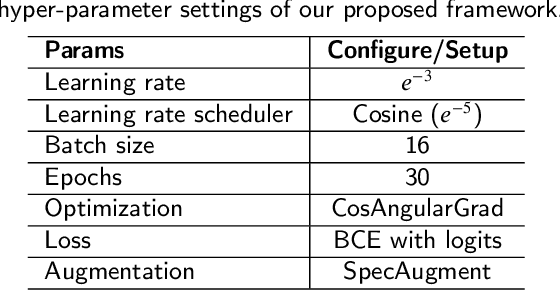Van Dung Do
Fruit-CoV: An Efficient Vision-based Framework for Speedy Detection and Diagnosis of SARS-CoV-2 Infections Through Recorded Cough Sounds
Sep 06, 2021



Abstract:SARS-CoV-2 is colloquially known as COVID-19 that had an initial outbreak in December 2019. The deadly virus has spread across the world, taking part in the global pandemic disease since March 2020. In addition, a recent variant of SARS-CoV-2 named Delta is intractably contagious and responsible for more than four million deaths over the world. Therefore, it is vital to possess a self-testing service of SARS-CoV-2 at home. In this study, we introduce Fruit-CoV, a two-stage vision framework, which is capable of detecting SARS-CoV-2 infections through recorded cough sounds. Specifically, we convert sounds into Log-Mel Spectrograms and use the EfficientNet-V2 network to extract its visual features in the first stage. In the second stage, we use 14 convolutional layers extracted from the large-scale Pretrained Audio Neural Networks for audio pattern recognition (PANNs) and the Wavegram-Log-Mel-CNN to aggregate feature representations of the Log-Mel Spectrograms. Finally, we use the combined features to train a binary classifier. In this study, we use a dataset provided by the AICovidVN 115M Challenge, which includes a total of 7371 recorded cough sounds collected throughout Vietnam, India, and Switzerland. Experimental results show that our proposed model achieves an AUC score of 92.8% and ranks the 1st place on the leaderboard of the AICovidVN Challenge. More importantly, our proposed framework can be integrated into a call center or a VoIP system to speed up detecting SARS-CoV-2 infections through online/recorded cough sounds.
 Add to Chrome
Add to Chrome Add to Firefox
Add to Firefox Add to Edge
Add to Edge